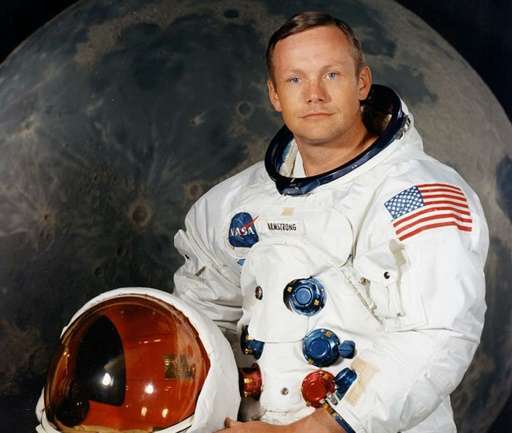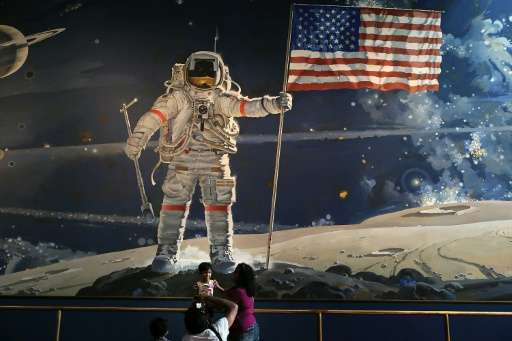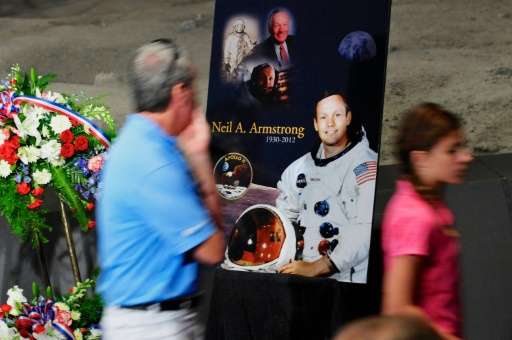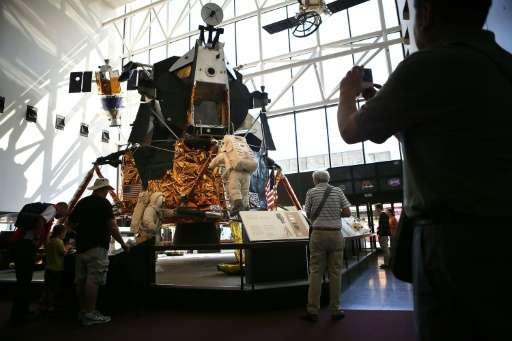Crowdfunding raises $720,000 to restore Neil Armstrong spacesuit

The Smithsonian's first shot at online crowdfunding ended Wednesday after raising a hefty $719,779 to restore the spacesuit that Neil Armstrong wore when he walked on the moon.
A total of 9,477 people contributed to the month-long Kickstarter "Reboot the Suit" campaign, which surpassed its $500,000 goal on July 24.
The windfall means the Smithsonian will have money to spare to preserve and display a second spacesuit used by Alan Shepard, the first American in space.
"It is mind-blowing," Yoonhyung Lee, the Smithsonian's director of digital philanthropy, told AFP in an interview at the Smithsonian National Air and Space Museum in downtown Washington.
"We did not really expect to both hit our goal so quickly and also to exceed our goal so dramatically. This was a huge triumph for us."
It was the first time the Smithsonian has turned to crowdfunding to help cover the cost of preserving its most valuable artifacts from the ravages of time.
The campaign lifted off on July 20, the 46th anniversary of the historic Apollo 11 lunar landing. Its conclusion coincided with National Aviation Day.
With cash in hand, the Smithsonian is now aiming to have Armstrong's white spacesuit and helmet ready for public viewing by the 50th anniversary in 2019.
"The suit is pretty fragile," Lisa Young, the Smithsonian curator tasked with overseeing its three-year restoration project, told AFP.
"It's reaching about its 50-year lifespan right now. A lot of its materials were made for temporary use—to get to the moon and back," she said.
Getting brittle
"We see the rubber getting a little bit brittle. The interior portions that the public doesn't see are what's really the most fragile."

Layers of polymers were used to create the suit, but back in the 1960s scientists had no clear idea how long they would last, Young explained.
"Natural materials tend to last longer," she said.
The US government pays for the upkeep of the Smithsonian's network of 19 museums and galleries as well as the cost of safeguarding their collections.
But exhibitions and restorations depend largely on private donations.
Depending on how much they put in, backers of the Kickstarter appeal got rewards ranging from a NASA space mission patch to a printed 3D copy of Armstrong's space glove.
Nine people who each put in the maximum contribution of $10,000 will be invited to see the moon suit at the Smithsonian's aerospace conservation lab.
For Americans, such contributions are tax-deductible.
Going forward, the Smithsonian is planning more crowdfunding projects this year under a partnership with Kickstarter.
However, it has yet to decide what exactly those projects will be.

Armstrong died in his native Ohio three years ago this month at the age of 82.
But the Apollo 11 capsule in which he and two fellow astronauts traveled to the moon endures as a centerpiece of the Smithsonian Air and Space Museum along the National Mall in downtown Washington.
Early space traveler
Shepard became the second person ever to travel into space, and the first American, in 1961 as an astronaut in NASA's pathbreaking Mercury program.
In 1971 he became the fifth and oldest person to walk on the moon as commander of the Apollo 14 mission. He died in California in 1998 at the age of 74.

The most successful Kickstarter campaign of all time raised more than $20 million for Pebble, a Taiwan-made smartwatch that went on sale this month, competing against the Apple Watch.
But perhaps the best known was a 2013 effort to bankroll a feature film version of the cult US detective mystery TV series "Veronica Mars."
It met its $2 million goal within 10 hours and ultimately reached $5.7 million.
With an annex alongside Dulles International Airport outside Washington, the Smithsonian National Air and Space Museum holds the world's biggest collection of historic aircraft and spacecraft.
© 2015 AFP


















